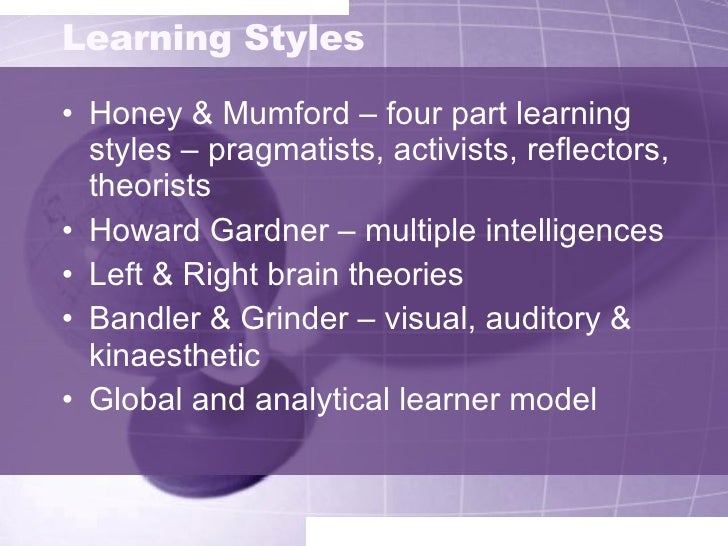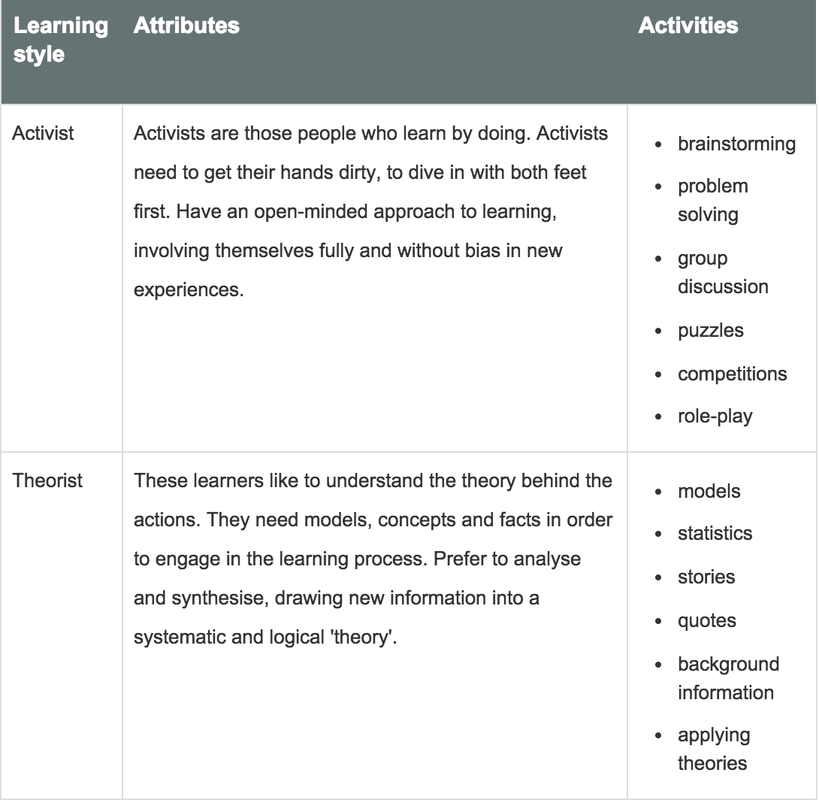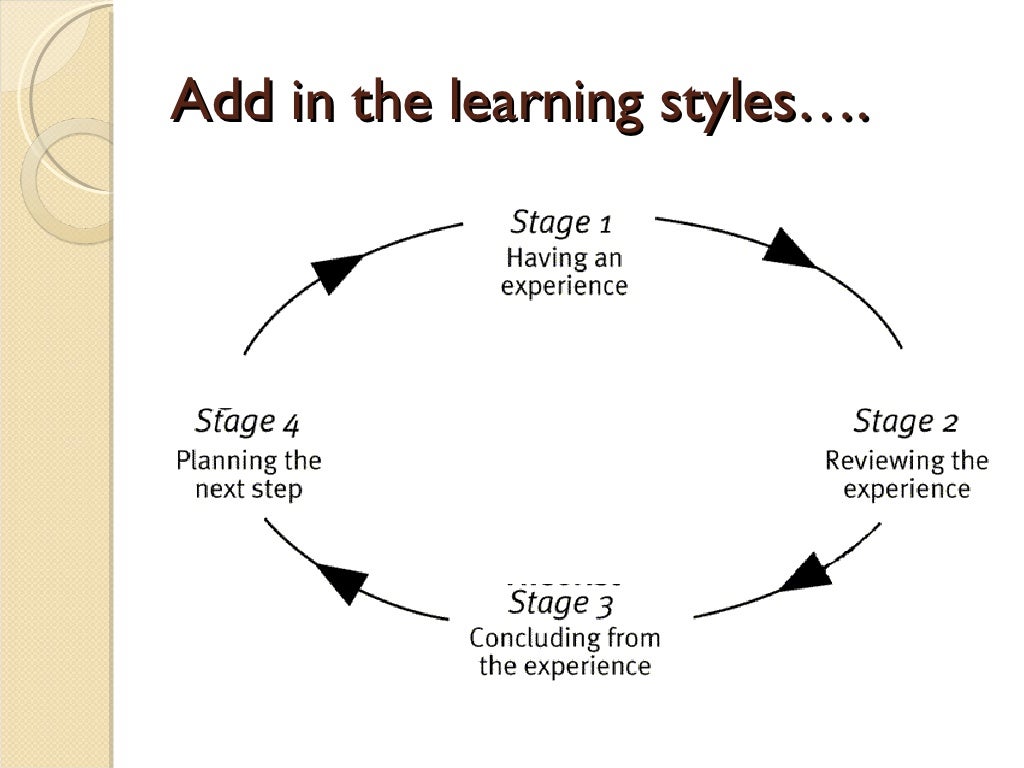Activists, reflectors, pragmatists and theorists. The honey mumford model is based on the kolb learning styles, but with a few differences.
Proyek Perancangan 2 Small Project, Mini Project dan Project Kelompok
Kolb (1981) and honey and mumford (1992) stated that learning styles, just like any other learned preferences, are adjustable either at will.
Benefits of honey and mumford learning styles. In their view, most people generally stick to one of the styles, or vary between two depending on the scenario. The activist learns by doing rather than seeing, reading or even listening. Honey and mumford learning styles activist reflector theorist pragmatist 6.
Learning styles according to honey & mumford model learning styles: They get involved and engross themselves in every activity. Just to name a few.
Understanding learning styles to enhance the experience of being a first year. Though there are many different theories and frameworks regarding learning styles, peter honey and alan mumford (1986) identified four different approaches people took to learning new information: The honey & mumford learning styles questionnaire.
Honey and mumford's learning styles were developed by peter honey and alan mumford in 1986. Honey & mumford learning styles questionnaire is a research instrument was developed for helping answer the research question indicating the development of a valid and reliable measurement instrument to match and determine students’ learning styles preferences within a higher educational institution. Teaching is a purposeful intervention with the aims of promoting learning and causing learning to happen.
Activists also love teamwork and working together. An activist, reflector, theorist and pragmatist, with a total of eighty questions in the test (honey and mumford, 1992). (1997) how to manage your learning environment.
There is no obvious or immediate benefit that they can recognise there is no practice or guidelines on how to do it there is no apparent benefit to the learning the event or learning is 'all theory' source: As i realize that larning should be better through interaction. Caple and martin ( 1994 ) stated that even though honey & a ;
It is basically the same as kolb’s model, with just a few differences. They based their initial work from the kolb learning style to discover four specific styles namely activists, reflectors, theorists and pragmatists. Learners are intrinsically different and have different preferred learning styles.
Peter honey and mumford learning styles. Activists like new ideas and experience and they enjoy to act first.they learn best when they work in team work and given challenges and like the idea of leading discussions a lot. According to the results of the honey and mumford learning style questionnaire.
The honey and mumford learning styles questionnaire was developed by peter honey and alan mumford. Each type possesses unique characteristics which when understood can. Strengths and weaknesses strengths weaknesses an activist.
The notion tha there could possibly be any disadvantages of uncovering the learning styles of your employees in order to improve productivity within your workplace seems ridiculous right? There are four possible styles; Honey & mumford handout 1.
4 learning styles by kolb. They divided learning styles into four categories which are activist, reflector, theorist and pragmatist. This kind of method is for people love to learn by having an experience via doing practical activities.
The honey and mumford’s (1992) learning style identifies and categorises an individual’s learning style. First, peter honey and alan mumford adapted david kolb’s model to use in business. It has been used extensively within the industry and academia for over 35 years.
Honey and mumford developed an alternative instrument known as the learning style questionnaire (lsq). As flexible and stable styles, individual’s learning style preferences could affect the effectiveness of learning. There are four possible styles;
Understanding learning styles for student nurses. Activists (learn primarily by experience), reflectors (learn from reflective observation), theorists. Their work is inspired by and built upon kolb’s learning styles model (leaver, 2005) however, they produced their own learning styles questionnaire (lsq) because it was found that kolb’s lsi had low validity with.
Therefore, the stages in the cycle were renamed to accord with managerial experiences as they deal. I look into the details of how learning style helps students to understand the importance. I will also be focusing on the learning cycle and learning style using the honey and mumford 80 questionnaire.
The honey and mumford’s (1992) learning style identifies and categorises an individual’s learning style. 6 presumably, the lsq has improved validity and predictive accuracy compared to the lsi. Honey and mumford learning style is one of the learning style is developed by peter honey and alan mumford.
Restriction of honey & a ; According to the results of the honey and mumford learning style questionnaire. Mumford acquisition manners focused on larning from experience and it did non vouch whether the experience was effectual acquisition.
The lsq describes 4 distinct types of learners: An activist, reflector, theorist and pragmatist, with a total of eighty questions in the test (honey and mumford, 1992). They mentioned the learning style comprise with four stages ,namely activist, theorist;
Honey and mumford proposed that individuals needed to use one of four different learning style s in order to complete activities. Well although the advantages far outweigh.



